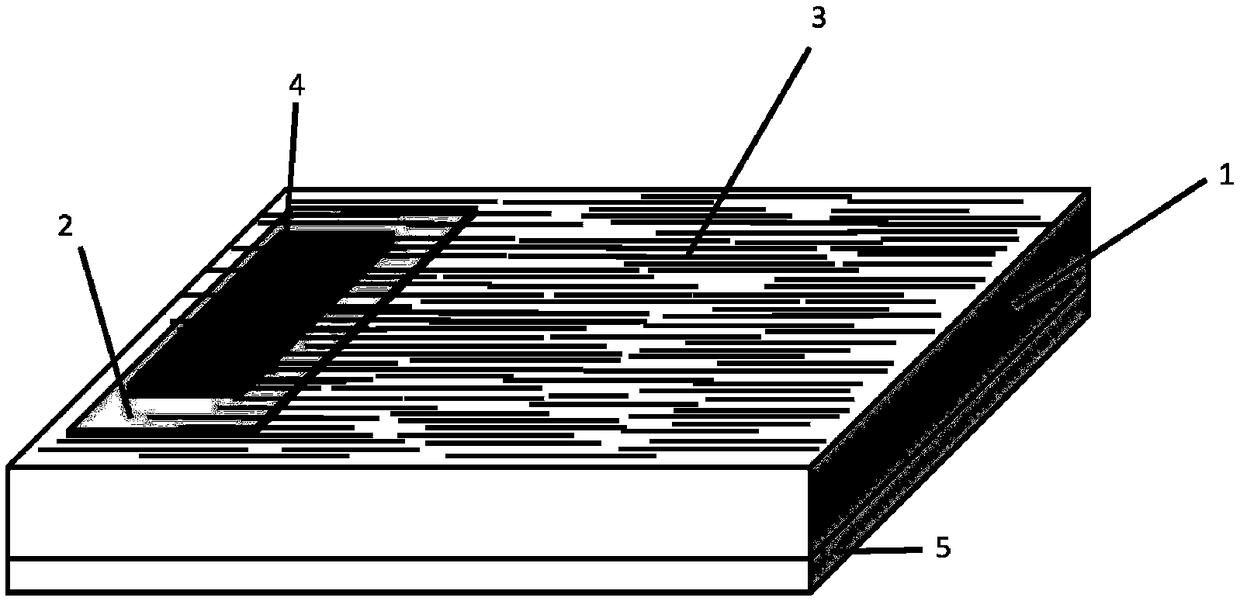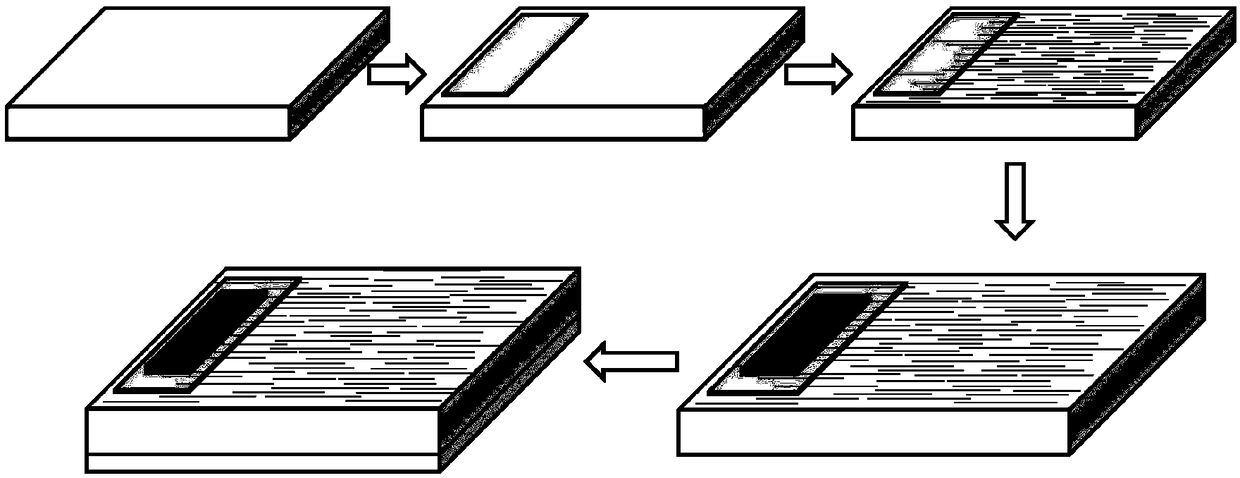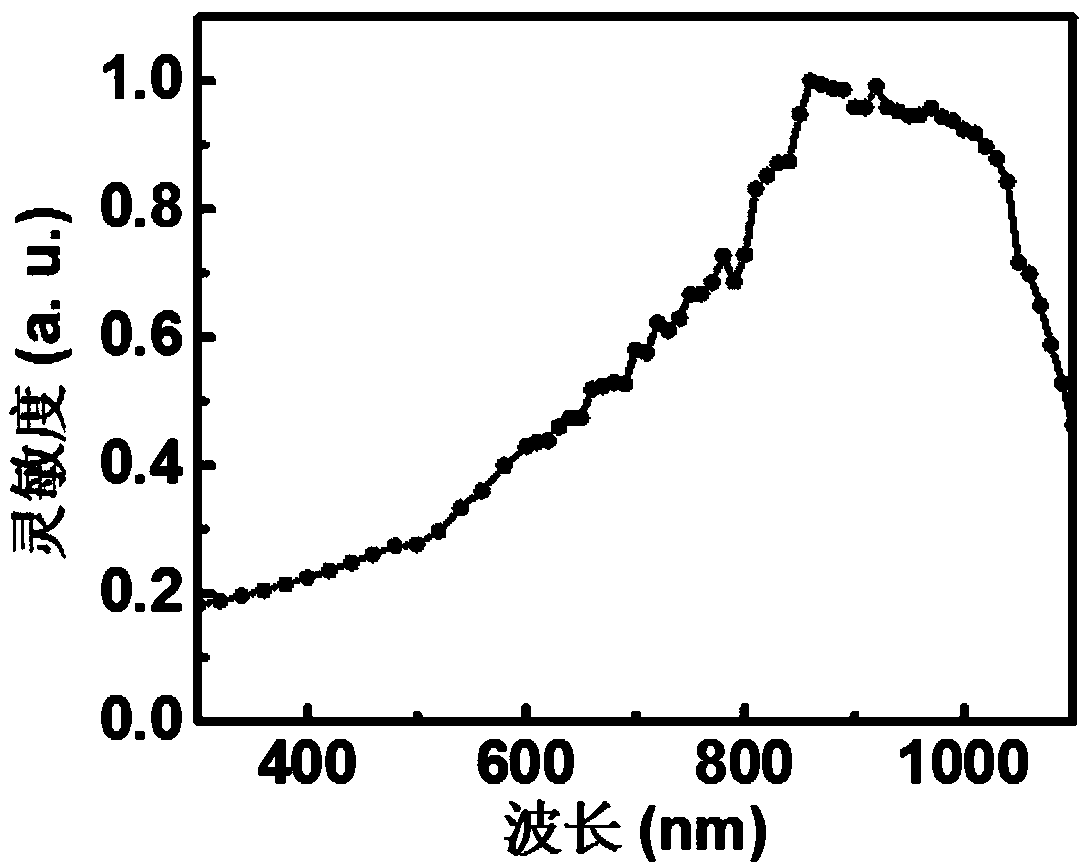A self-driven near-infrared photodetector based on a quasi-one-dimensional nanostructure of copper sulfate potassium and its preparation method
A nanostructure, near-infrared light technology, applied in the direction of circuits, electrical components, semiconductor devices, etc., can solve the problems of high equipment conditions, production costs, and limited promotion, so as to reduce the difficulty and cost of preparation, easy integration, and simple preparation process easy effect
- Summary
- Abstract
- Description
- Claims
- Application Information
AI Technical Summary
Problems solved by technology
Method used
Image
Examples
Embodiment 1
[0037] see figure 1 , the self-driven near-infrared photodetector of the present invention is based on a planar silicon 1, and an insulating region 2 is constructed at a local position on the upper surface of the planar silicon 1; 7 S 4 KCu assembled with quasi-one-dimensional nanostructures by LB technique 7 S 4 Monolayer 3; KCu 7 S 4 Part of the single-layer film 3 is located on the insulating region 2, and the remaining part is directly in contact with the upper surface of the planar silicon, forming a Si / KCu 7 S 4 heterojunction; in KCu 7 S 4 A first metal thin film electrode 4 is deposited on the monolayer film 3, and KCu 7 S 4 The single-layer film 3 forms an ohmic contact; the first metal thin film electrode 4 is located above the insulating region 2, and does not exceed the area where the insulating region 2 is located; the second metal thin film electrode 5 is brushed on the back of the plane silicon 1, and formed with silicon. ohmic contact.
[0038] Speci...
Embodiment 2
[0055] The self-driven near-infrared photodetector and its preparation method in this embodiment are the same as those in Embodiment 1, except that the surface pressure in step D is 5 mN / m.
[0056] The self-driven near-infrared photodetector prepared in this example operates at a light intensity of 300 μW cm -2 , Under the irradiation of monochromatic light with a wavelength of 980nm, it presents remarkable photovoltaic characteristics, such as Figure 9 As shown, the open circuit voltage is 0.117V, the short circuit current is 3.27nA, and the fill factor is 16.91%.
Embodiment 3
[0058] The self-driven near-infrared photodetector and its preparation method in this embodiment are the same as those in Embodiment 1, except that the surface pressure in step D is 15 mN / m.
[0059] The self-driven near-infrared photodetector prepared in this example operates at a light intensity of 300 μW cm -2 , Under the irradiation of monochromatic light with a wavelength of 980nm, it presents remarkable photovoltaic characteristics, such as Figure 10 As shown, the open circuit voltage is 0.064V, the short circuit current is 299nA, and the fill factor is 23.52%.
PUM
| Property | Measurement | Unit |
|---|---|---|
| electrical resistivity | aaaaa | aaaaa |
| electrical resistivity | aaaaa | aaaaa |
| thickness | aaaaa | aaaaa |
Abstract
Description
Claims
Application Information
 Login to View More
Login to View More - R&D
- Intellectual Property
- Life Sciences
- Materials
- Tech Scout
- Unparalleled Data Quality
- Higher Quality Content
- 60% Fewer Hallucinations
Browse by: Latest US Patents, China's latest patents, Technical Efficacy Thesaurus, Application Domain, Technology Topic, Popular Technical Reports.
© 2025 PatSnap. All rights reserved.Legal|Privacy policy|Modern Slavery Act Transparency Statement|Sitemap|About US| Contact US: help@patsnap.com



